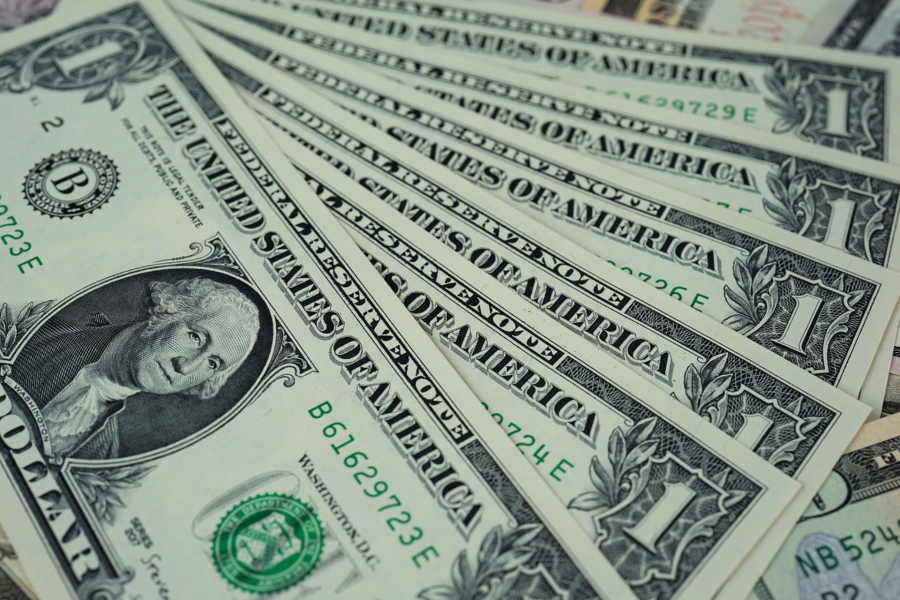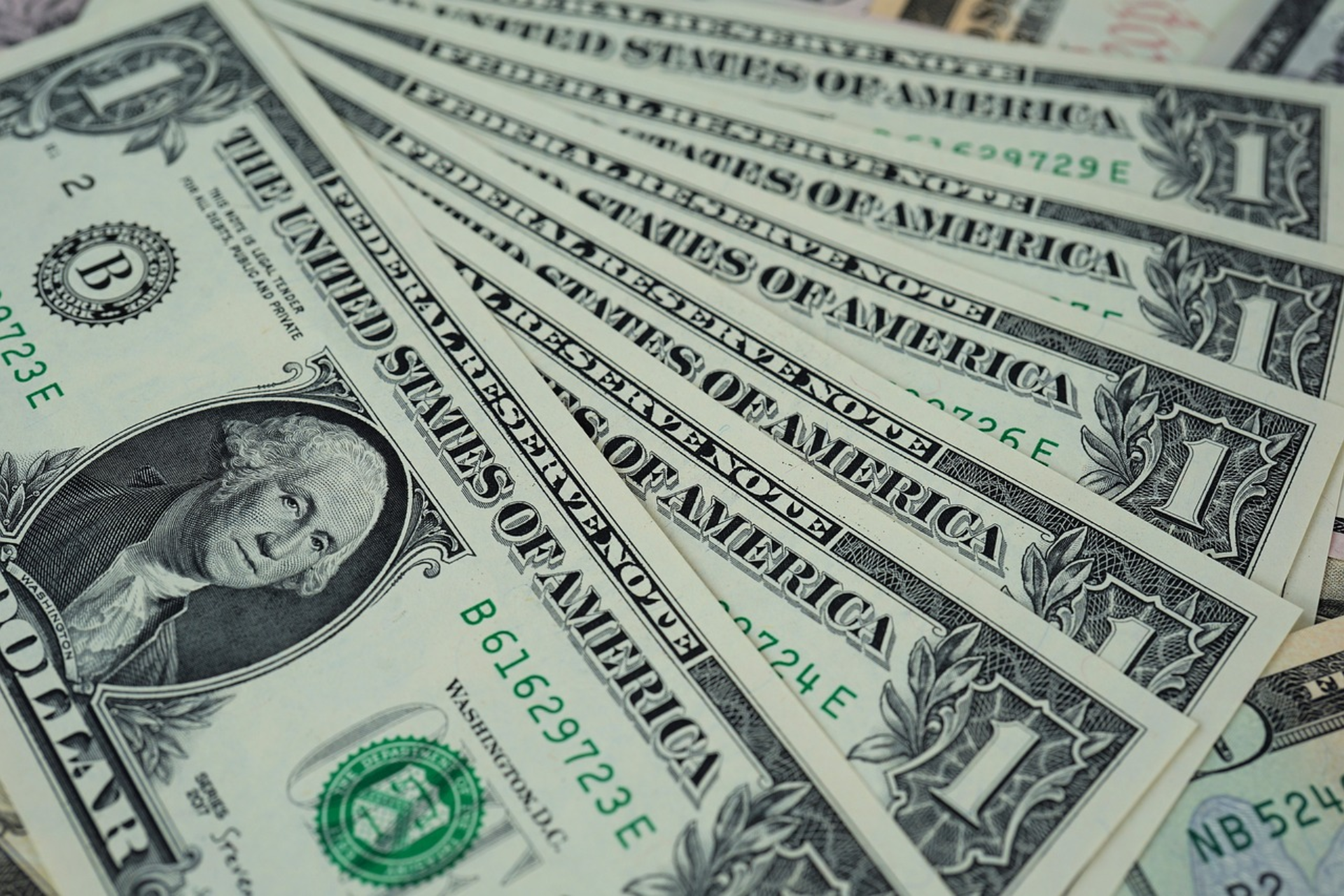
Dollar index was flat after retail sales data, yuan falls to new low
The dollar index was flat after data showed U.S. retail sales increased more than expected in July, while the yuan sank to a nine-month trough on Tuesday after China’s central bank unexpectedly cut key policy rates.

Reuters: The dollar index was flat after data showed U.S. retail sales increased more than expected in July, while the yuan sank to a nine-month trough on Tuesday after China’s central bank unexpectedly cut key policy rates.
U.S. DOLLAR INDEX WAS FLAT
U.S. retail sales jumped 0.7% last month, the Commerce Department said, demonstrating that demand has remained resilient despite the Federal Reserve’s aggressive interest rate hikes to tame inflation, thanks to strong wage gains from a tight labor market. The dollar index , which measures the currency against six peers including the euro and sterling, dropped as low as 102.800 after hitting a 1-1/2-month high at 103.46 on Monday. It was last up 0.058% at 103.200. “The dollar is holding relatively stable here, but we are seeing a lot of weakness in other currencies globally,” said Karl Schamotta, chief market strategist at Corpay.
The dollar gained over 0.5% against the offshore yuan to a nine-month high of 7.3307 as the People’s Bank of China cut its rates in an effort to boost a sputtering economic recovery. Punctuating those worries, Chinese data on industrial output, retail sales and investment released shortly after the PBOC’s rate cut showed unexpected slowdowns. “I think the strong U.S. sales data provided some relief to the negative surprise in the Chinese data, so this has pushed risk back up,” said John Velis, head of Americas macro strategy at BNY Mellon Markets in New York.
ALSO READ: Who is the richest person in the world today? Top 10 list – 16 August 2023
Traders are looking for any hints of intervention, after the dollar’s surge above 145 last autumn triggered the first yen buying by Japanese officials in a generation. “It does seem that authorities both at the People’s Bank of China and at the Ministry of Finance in Japan are relatively comfortable with further depreciation in their currencies. However, they’re certainly looking at and certainly prepared to step in if we see a disorderly one-sided move in currency markets,” said Schamotta. Japanese Finance Minister Shunichi Suzuki said on Tuesday that authorities are not targeting absolute currency levels when it comes to intervening in the market.
Elsewhere, sterling rose after data showed British basic wages grew at a record pace, adding to the Bank of England’s inflation worries. The pound was last 0.16% higher at $1.2705 following data showing British wages excluding bonuses were 7.8% higher than a year earlier in the three months to June. That represented the highest annual growth rate since comparable records began in 2001.
The UK unemployment rate, however, unexpectedly rose to 4.2% from 4.0%, but money market traders still expect the Bank of England to raise rates by at least 25 basis points next month on worries high pay growth will lead to second-round effects on inflation. The euro was last unchanged $1.09045. The Russian rouble gave up early gains after Russia’s central bank lifted its key interest rate by 350 basis points to 12% at an emergency meeting to try and halt the currency from weakening past 100 to the dollar after a public call from the Kremlin for tighter monetary policy.
ALSO READ: Joe Biden strategically sidesteps Trump’s legal woes
BRITISH POUND
FXStreet: The all-important Consumer Price Index data from the United Kingdom will be published on Wednesday, August 16. The Bank of England raised its policy rate by 25 basis points to 5.25% in August but Governor Andrew Bailey refrained from committing to further policy tightening in the post-meeting press conference. Inflation developments in the UK could influence the BoE’s rate outlook and impact Pound Sterling’s valuation. In the latest projections, the BoE revised inflation forecasts lower. The bank now expects inflation to fall to 4.93% by the fourth quarter of 2023, lower than the May estimate of 5.12%, and sees inflation retreating to 2.82% in one year’s time, compared to 3.38% in May.
While commenting on the inflation outlook, Bailey told reporters that they were expecting inflation to fall to around 5% in October. The BoE Governor, however, further noted that services price inflation brought unwelcome news since May. The data from the UK revealed on Tuesday that the basic wage inflation, as measured by the change in Average Earnings Excluding Bonus, hit a new record growth rate of 7.8% in three months through June. The Unemployment Rate in the same period, however, rose to 4.2% from 4%. The rate-sensitive 2-year UK Gilt yield edged higher after these readings, highlighting the impact of hawkish Bank of England bets.
Economists are expecting the headline annual UK Consumer Price Index inflation to fall to 6.8% in July from 7.9% in June. The Core CPI is forecast to tick down to 6.8% from 6.9%. On a monthly basis, Britain’s CPI inflation is seen declining 0.5% following the 0.1% growth recorded in June. Previewing the upcoming UK inflation data and how it could alter the BoE monetary policy, “with our expectation that core inflation remains unchanged at 7.1% in June, coupled with the continued acceleration in wage growth in the past week, it should keep the Bank hiking,” say analysts at Societe Generale and elaborate.
ALSO READ: Fuel price UPDATE: Horror petrol and diesel hike coming in September
“But whether the Bank downshifts to 25bp or hikes by another 50bp is less certain, with any upside or downside surprise to the CPI data possibly swinging the Bank’s decision. Our forecast is for a downshift to 25bp, in the expectation that more convincing signs that the labur market is cooling will steadily build up. At the end of the week, we expect the harsh mortgage rate environment will weigh on both consumer confidence and retail sales.”
SOUTH AFRICAN RAND
Reuters: The South African rand slipped on Tuesday, after China’s central bank surprisingly cut key policy rates to boost a sputtering economic recovery in South Africa’s biggest trading partner. The rand had also fallen on Monday on worries over the health of China’s economy, the world’s second largest. After a broad array of lackluster Chinese data on Tuesday, the People’s Bank of China cut one set of key interest rates, and followed it with cuts on other rates. “The rand has been on the backfoot, after concerns around the Chinese economy grew when the PBoC decided to unexpectedly cut interest rates,” said DailyFX analyst Warren Venketas in a research note.
At 1544 GMT, it traded at 19.1325 against the U.S. dollar, around 0.2% weaker than its previous close. Locally, data from Statistics South Africa showed the country’s official unemployment rate dropped marginally in the second quarter to 32.6%, its lowest level since the first quarter of 2021. Analysts polled by Reuters had predicted the official unemployment rate would come in at 32.9%, the same as in the first quarter.
ALSO READ: Who are the richest South Africans in the world today? – 16 August 2023
“Although it has improved moderately from levels recorded during the COVID-19 pandemic, it remains at an elevated level,” said Investec analyst Lara Hodes. Shares on the Johannesburg Stock Exchange fell, with the blue-chip Top-40 index ending over 0.8% lower. South Africa’s benchmark 2030 government bond was also weaker, the yield up 2.5 basis points at 10.355%.
GLOBAL MARKETS
Reuters: Asia stocks hit a 11-week low on Wednesday as renewed concerns about U.S. interest rates slugged Wall Street, while investors still smarted from dismal Chinese economic data and the absence of meaningful stimulus. MSCI’s gauge of Asia Pacific stocks outside Japan was down 1.1% at 0138GMT, touching its lowest point since June 1. Japan’s Nikkei 225 index slipped 1.3% to its lowest since July 12. Australia’s S&P/ASX 200 index fell nearly 1.5%. China reported weaker than expected July activity data Tuesday, accompanied by news that Beijing would no longer publish youth unemployment data.
The PBOC also unexpectedly lowered its policy rate on Tuesday, earlier than many investors had expected and possibly probably triggered by the string of disappointing data on loans and credit, the housing market and trust industry as well as the threat of deflation. “Investors sentiment toward China is pretty bad,” said Redmond Wong, Greater China market strategist at Saxo Markets. Wong said he was most concerned about month-to-month decline of China’s retail sales and weak infrastructure investments, which suggested lack of funding from local governments.
ALSO READ: Donald Trump’s indictments cast uncertainty over 2024 election
China’s industrial output and retail sales growth both slowed from a month earlier to a year-on-year pace of 3.7% and 2.5% respectively, missing expectations. Hang Seng Index and China’s benchmark CSI300 Index opened 1.21 and 0.43% lower respectively. “We think the Chinese Central bank is not going hard enough on reducing interest rates, encouraging the banks to lend more and stimulate very flat consumer activity,” said John Milroy, an investment adviser at Ord Minnett. The world’s second largest economy is due to report new home price data for July on Wedneday.
Last month, prices fell by a very marginal 0.06%. If the decline begins to accelerate, it will feed back on weaker consumer confidence and weigh on already feeble retail sales growth. All three major U.S. equity indexes ended Tuesday lower, after a stronger-than-expected report on U.S. retail sales data. The Dow Jones Industrial Average fell 1.02%. The S&P 500 dropped 1.16% and the Nasdaq Composite shed 1.14% in value.
The data increased the odds for the Fed to keep rates at high levels for longer and offered strength to the greenback, pressing on riskier currencies, typically the Australian dollar and the New Zealand dollar, said Tina Teng, Markets Analyst, CMC Markets APAC & Canada, in a Wednesday note. “Focus will be on the results as they land and any of the outlook commentary. BHP next week important particularly view on iron ore and feed back on what the steel mills are saying and doing. US housing numbers and approvals will be interesting, been very strong form other measures,” Ord Minnett’s Milroy said. U.S. crude was down 0.31% at $80,74 a barrel, while Brent fell 0.26% to $84.67 a barrel. Spot gold was flat at around $1,901.8 an ounce.
ALSO READ: Newspaper front pages from around the world, 16 August 2023
